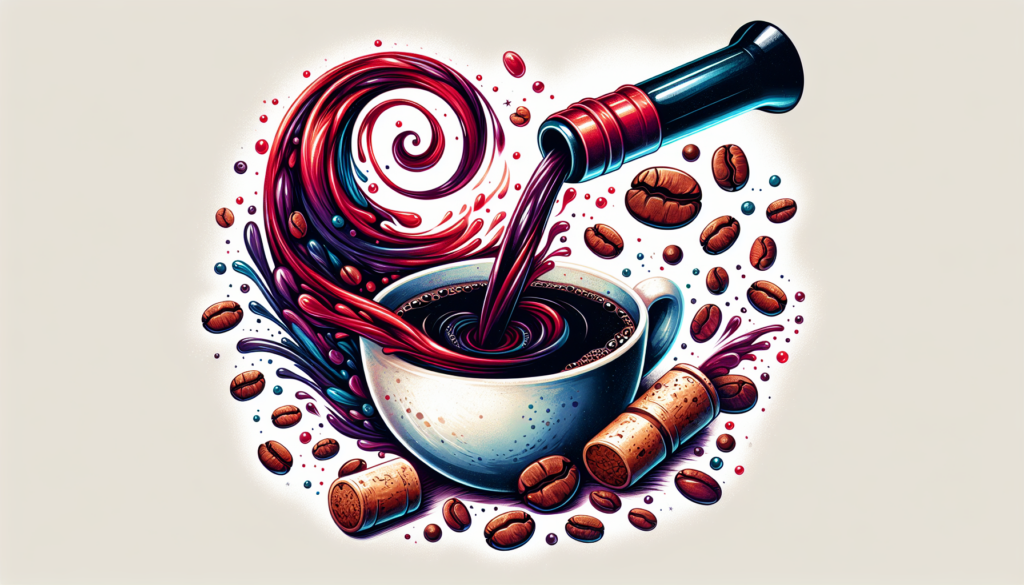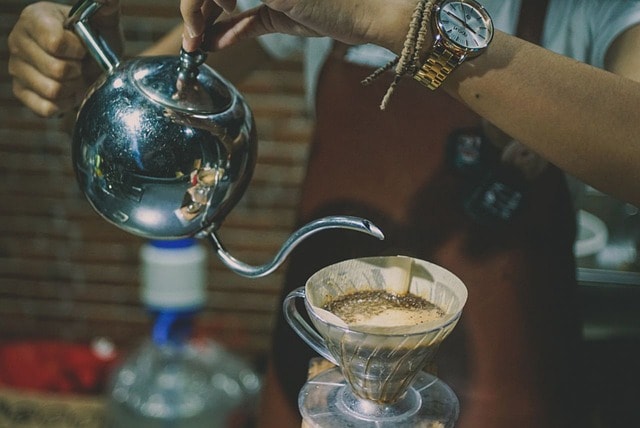Are you curious if wine and coffee can be combined to create a unique drink experience? Wine and coffee may seem worlds apart, but their rich flavors and cultural significance make them a perfect match for innovative pairings. This article will explore how these two beloved beverages intersect and how you can enjoy them together in surprising ways.
Key Takeaways
- Coffee and wine share a surprising connection in flavor complexity and cultural significance, making them a match made in beverage heaven.
- Brewing coffee wine at home is easier than finding a barista who can spell ‘cappuccino’ – just let that cold brew steep and watch the magic unfold.
- Pairing coffee wine with food is like playing matchmaker for your taste buds; dark chocolate and Tiramisu are sure to impress on this culinary first date.
The Unique Intersection of Coffee and Wine
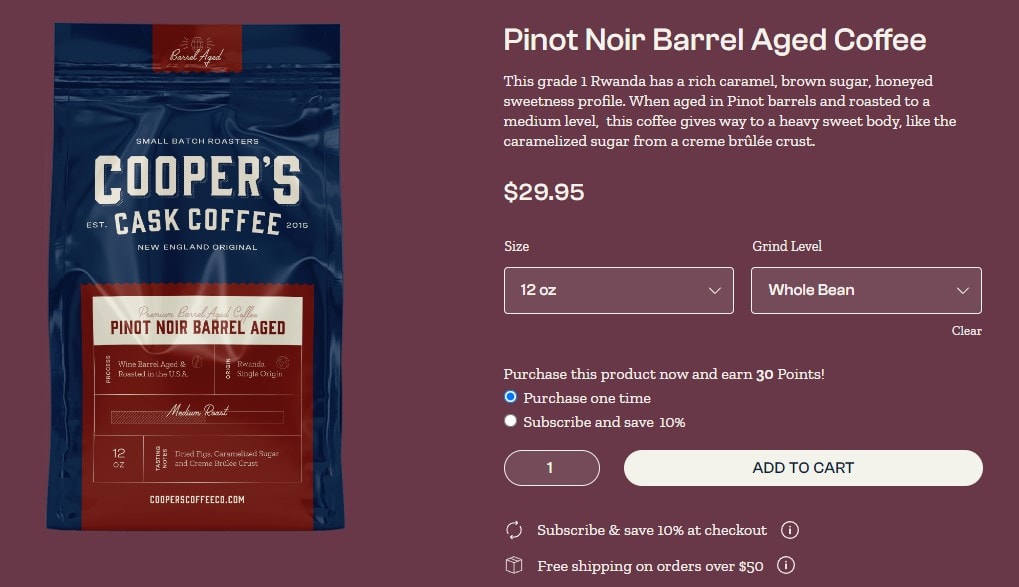
What do coffee and wine have in common? More than you might think. Both beverages are celebrated for their versatility and complex flavors, making them a perfect match for innovative pairings. Coffee can be savored at any time of day, pairing well with a range of flavors, similar to wine. Specialty coffee’s complexity opens up opportunities to explore new flavor combinations with wine, making each sip an adventure.
Terroir plays a significant role in shaping the profiles of both coffee and wine. Terroir encompasses the environmental factors that influence the flavor profiles of these beverages, from the soil and climate to the altitude and cultivation methods. This shared characteristic means that just as wine connoisseurs appreciate the nuances of different wine regions, coffee enthusiasts can enjoy the diverse flavors that different coffee beans offer. Interestingly, smelling coffee grounds between wine tastings can help reset your sense of smell, allowing for a clearer distinction between different wines.
Beyond their flavor profiles, coffee and wine also share significant cultural and sensory experiences. Both are deeply rooted in their respective cultures and are often enjoyed in social settings, creating meaningful connections and memories.
The term ‘coffee’ has Arabic roots and originally referred to wine, underscoring the deep cultural connections between these two drinks. Understanding the production processes and the cultural significance of coffee and wine can enhance your appreciation and enjoyment of this unique blend.
The Origins of Coffee and Wine Pairing
The concept of pairing coffee and wine dates back to the 17th century, when coffee was first introduced to Europe. At that time, coffee was a rare and expensive commodity, often reserved for social gatherings and special occasions. As coffee became more widely available, it began to be paired with wine, which was already a beloved beverage in Europe.
One of the earliest recorded examples of coffee and wine pairing comes from the 18th century in England, where coffee was paired with Madeira wine. Madeira wine, known for its sweet and nutty flavor profile, complemented the bitter flavor of coffee beautifully. This pairing was a hit, and it set the stage for future coffee and wine combinations.
Over time, the practice of pairing coffee and wine spread throughout Europe and eventually around the world. Today, coffee and wine pairing is a popular trend in the culinary world, with many restaurants and cafes offering specialized pairing menus. This historical journey highlights the enduring appeal of combining the rich, complex flavors of coffee and wine.
Understanding Coffee Flavor
Coffee flavor is a complex and multifaceted concept influenced by various factors, including the type of coffee beans used, the roast level, and the brewing method. The flavor of coffee can range from sweet and fruity to bitter and earthy, with notes of chocolate, vanilla, and caramel often making an appearance.
When pairing coffee with wine, it’s crucial to consider the coffee’s flavor profile and how it will complement or contrast with the wine. For instance, a bold and bitter coffee might pair well with a full-bodied red wine, while a sweet and fruity coffee could be a delightful match for a crisp and refreshing white wine. Understanding these nuances allows you to create a harmonious blend that elevates the tasting experience of both beverages.
The Origins of Coffee Wine
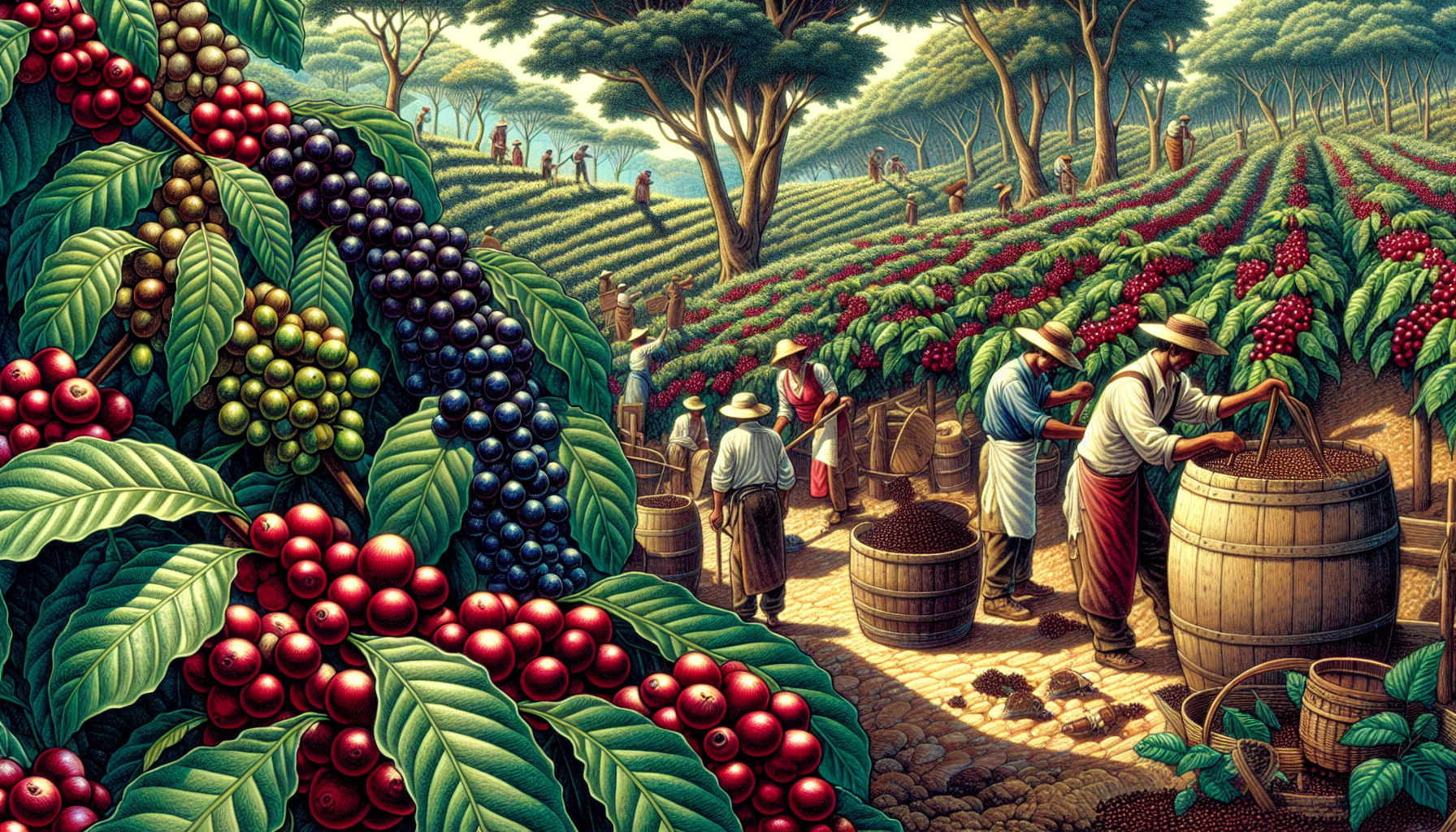
The origins of coffee wine are as rich and fascinating as the drink itself. Historically, coffee’s energizing effects were first discovered in the Arabian Peninsula, where it was linked to Islamic practices and used as a stimulant during religious observances. One popular legend tells of a goatherder who noticed his animals’ increased vitality after eating coffee berries, leading to the discovery of coffee’s stimulating properties.
As coffee spread from the Islamic world to Europe in the 17th century, it became a subject of both fascination and controversy. Coffee houses emerged as vital cultural hubs for social interaction and intellectual exchange, despite some religious leaders initially labeling coffee as the ‘Devil’s drink’.
This rich history of coffee sets the stage for its innovative fusion with wine, creating a drink that is both traditional and modern.
Wine and Coffee Pairing Principles
Pairing wine and coffee is an art that requires attention to detail and an understanding of flavor dynamics. Here are a few key principles to guide you:
- Bold and Bitter Coffees: These pair well with full-bodied red wines like Cabernet Sauvignon or Syrah. The robust flavors of the coffee and the wine complement each other, creating a rich and satisfying experience.
- Sweet and Fruity Coffees: These are best paired with crisp and refreshing white wines such as Sauvignon Blanc or Pinot Grigio. The lightness of the wine balances the sweetness of the coffee, making for a delightful combination.
- Medium-Bodied Coffees: Pair these with medium-bodied wines like Merlot or Chardonnay. The balanced flavors of both the coffee and the wine create a harmonious pairing that is neither too overpowering nor too subtle.
- Avoid Sweet or Dessert Wines: Pairing coffee with sweet or dessert wines can be tricky, as the sweetness of the wine can overpower the coffee’s flavor. It’s best to avoid this combination to ensure that both beverages can be appreciated fully.
By following these principles and considering the flavor profiles of both the coffee and the wine, you can create pairings that enhance your enjoyment of these beloved beverages.
Brewing Coffee Wine at Home
Making coffee wine at home may seem challenging, but it’s a rewarding process that lets you tailor the flavors to your preference. Start by preparing cold brew coffee, which is smoother and less bitter than hot-brewed coffee, making it an ideal base for coffee wine. To make cold brew, coarsely grind your coffee beans and mix them with room temperature water, letting the mixture steep for 12 to 24 hours. A recommended ratio is about 14-16 grams of coffee for every 6 ounces of water.
Selecting the appropriate coffee beans and roast levels is vital. Lighter roasts tend to yield a more pleasant flavor profile for cold brew, as dark roasts can develop a burnt taste.
After preparing your cold brew, begin the fermentation process. Add yeast nutrient and pitch champagne yeast into the fermenting container after the coffee is prepared. This step is essential to kick-start the fermentation that will turn your coffee into wine.
Once fermentation is complete, typically after a week, you can start bottling your coffee wine. The result is a unique drink that blends the rich flavors of coffee with the depth of wine, perfect for impressing guests at your next gathering.
Enhancing Coffee Flavor with Wine
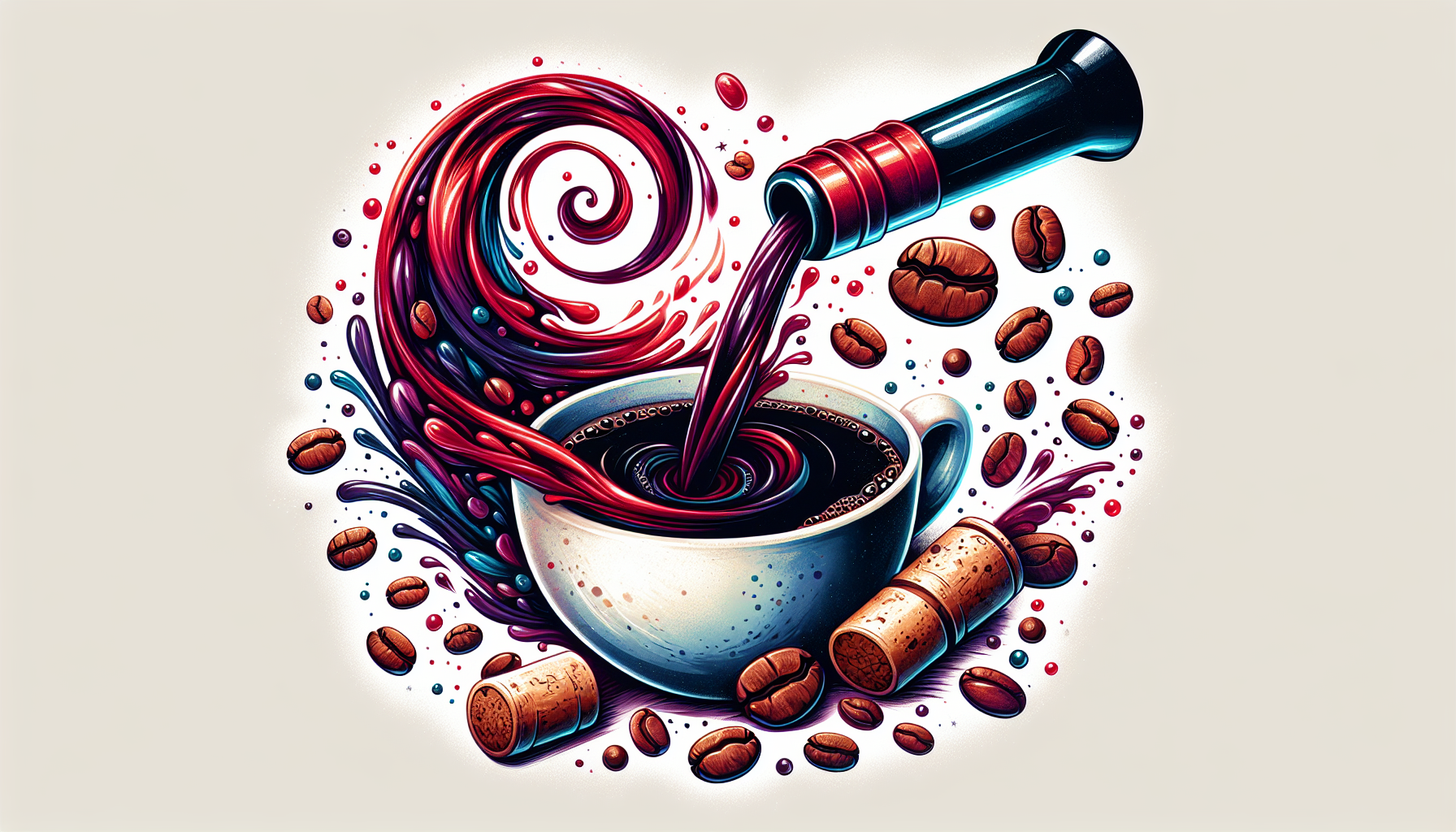
Improving coffee’s flavor with wine is an art that demands careful attention to detail. Begin by using 6 ounces of medium roast ground coffee and dissolving 2 1/2 pounds of granulated sugar in the brew. Maintain a brewing temperature between 110-120°F to prevent extracting excessive bitterness. Allowing the coffee to sit for about 24 hours before filtering out the grounds can also help reduce bitterness.
Trying different types of sugar can significantly alter the flavor profile of your coffee wine. For instance, dark brown sugar creates a richer and more complex taste compared to white sugar. Vanilla extract can add an inviting aromatic quality that balances the bitterness. Incorporating real vanilla, like homemade vanilla extract, provides an authentic taste.
Sweetening your coffee wine with alternatives like honey or malt syrup adds extra complexity. These small tweaks allow you to customize your coffee wine to your taste, making it a truly personalized drink experience.
Pairing Coffee Wine with Food
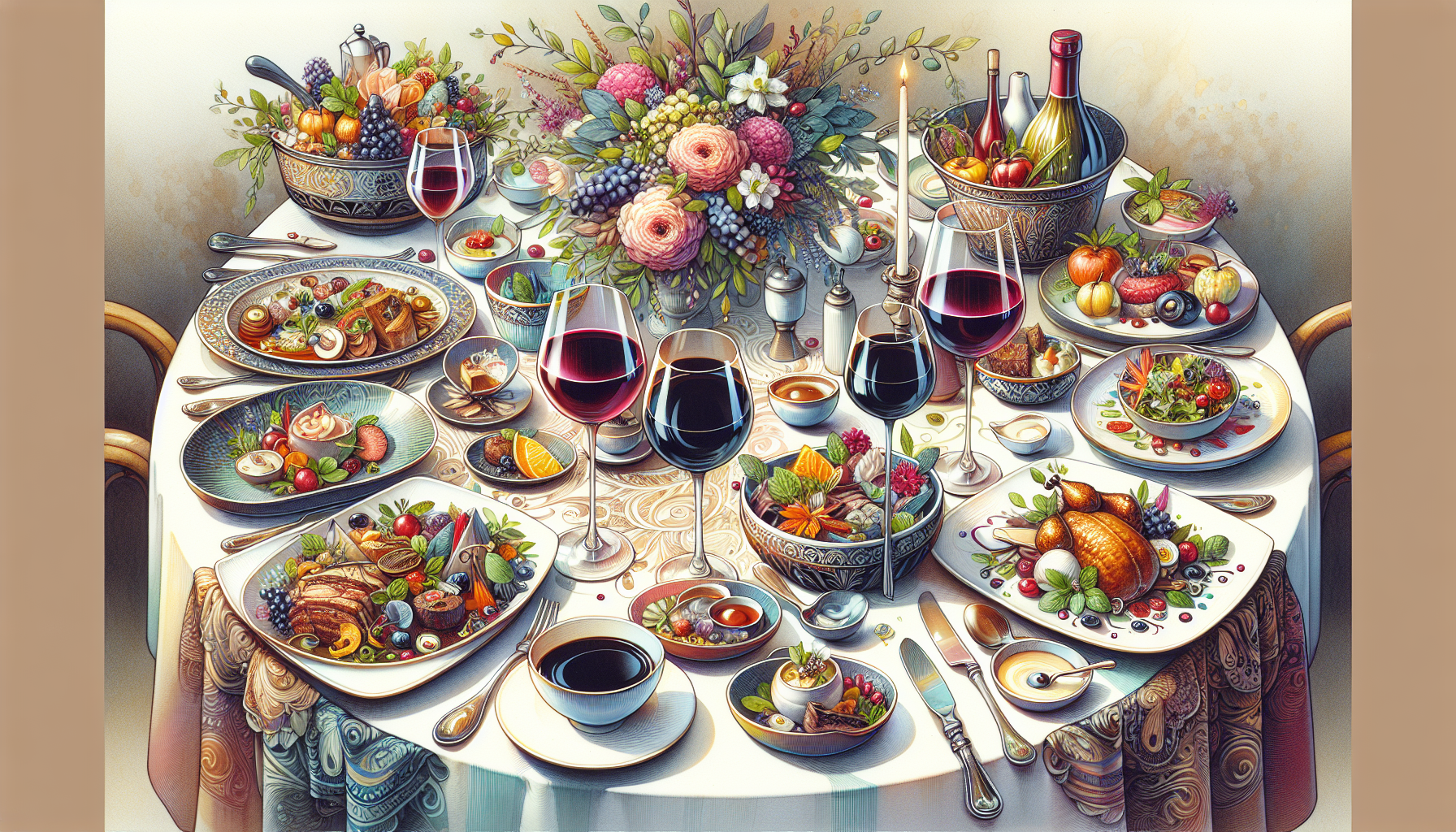
Pairing coffee wine with food is all about understanding the distinct characteristics and flavor profiles of each component. Pairing principles involve complementary contrasts and flavor harmony, enhancing your tasting experience. For example, dark chocolate pairs exceptionally well with coffee wine due to their complementary flavors, enhancing the overall tasting experience.
For specific pairing recommendations, try Apothic Brew with soft cheeses or desserts like Tiramisu. The creamy texture of soft cheeses and the rich, layered flavors of Tiramisu complement the unique taste of coffee wine perfectly. These pairings not only enhance the flavors but also create a more immersive and enjoyable dining experience.
Trying different pairings can lead to delightful discoveries, so explore new combinations to find what suits your palate best.
Cold Brew Coffee and Wine Fusion
Combining cold brew coffee with wine is as amazing as it sounds. Cold brew coffee, often smoother and less bitter than hot-brewed, serves as a suitable base for blending with wine. This smoothness allows the flavors of the wine to shine through without being overpowered by the bitterness of the coffee.
Simply prepare your cold brew coffee as described earlier and mix it with your favorite red wine. The result is a refreshing drink that combines the best of both worlds. Serve it over ice for a cool, invigorating beverage perfect for any occasion.
Espresso and Red Wine Cocktails
Espresso and red wine cocktails are a must-try for those seeking a stronger kick. A popular recipe is the Sweet Red Espresso Martini, blending sweet red wine with vodka and espresso for a rich flavor. To make this cocktail, mix vodka, Oliver Sweet Red wine, chilled espresso, simple syrup, and egg white, then shake with ice.
This cocktail offers a unique flavor profile, blending the richness of sweet red wine, the boldness of espresso, and the smoothness of vodka. Ideal for a night out or special occasion, this cocktail provides a sophisticated and delicious drink experience.
Health Benefits of Coffee and Wine

In moderation, both coffee and wine offer several health benefits. Moderate coffee consumption is linked to lower risks of certain diseases, including cardiovascular conditions and type 2 diabetes. Coffee is also rich in antioxidants, which can help combat oxidative stress and may contribute to overall health benefits.
Likewise, moderate alcohol consumption, especially red wine, can decrease blood pressure in hypertensive individuals and improve heart health. However, it is essential to consume these beverages in moderation to fully benefit from their health properties while minimizing potential negative effects.
Popular Coffee Wine Brands
Cooper’s Cask Coffee has a small selection of wine infused coffee. Although not exactly like “wine coffee”, this wine infused barrel aged coffee combines the specific origin of the coffee, roasting profile, and wine type, offering a well-balanced flavor profile. Try one of our Wine Trio Sets or individual bags.
Summary
To sum up, the fusion of coffee and wine opens up a world of possibilities for drink enthusiasts. By exploring their unique intersection, understanding the origins of coffee wine, and experimenting with home brewing, you can create a personalized and delightful drink experience. Pairing coffee wine with food and trying out new cocktail recipes further enhances the enjoyment. Remember to enjoy these beverages in moderation to maximize their health benefits. Cheers to the perfect blend of coffee and wine!
Frequently Asked Questions
What is coffee wine?
Coffee wine is like a cozy hug in a glass, blending the boldness of coffee with the smoothness of wine for a deliciously complex experience! It’s the perfect way to caffeinate your evenings with a twist.
How do you make coffee wine at home?
Making coffee wine at home is as easy as brewing some cold coffee, tossing in yeast, letting it ferment, and then bottling your liquid masterpiece. Who knew your morning brew could turn into your evening delight?
What foods pair well with coffee wine?
Coffee wine is a match made in heaven with dark chocolate and soft cheeses; they really bring out the rich flavors. Don’t forget to indulge in a slice of Tiramisu for dessert—it’s a triple treat!
What are the health benefits of coffee and wine?
Drinking coffee and wine in moderation can be a delightful duet for your health, providing antioxidants and a boost to your heart. So, while you sip, you’re actually doing your body a favor—cheers to that!
Are there any popular brands of coffee wine?
Absolutely, Apothic Brew is the star of the show in the coffee wine world, blending bold coffee flavors with that beloved wine punch. It’s like your morning brew decided to get fancy!
